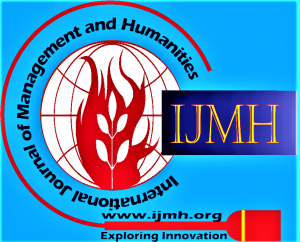![]()
College Libraries as Drivers of Socio-Cultural Sustainability: Insights from Structural Equation Modelling
Narsis I1, A. John Dayana2
1Dr. Narsis I, Associate Professor, Department of Commerce, Government Arts College (Affiliated to Bharathidasan University), Tiruchy – 620022. (Tamil Nadu), India.
2Dr. A. John Dayana, Vice Principal, Gonzaga College of Arts and Science for Women, Krishnagiri District, (Tamil Nadu), India.
Manuscript received on 01 September 2025 | First Revised Manuscript received on 04 September 2025 | Second Revised Manuscript received on 08 September 2025 | Manuscript Accepted on 15 September 2025 | Manuscript published on 30 September 2025 | PP: 15-23 | Volume-12 Issue-1 September 2025 | Retrieval Number: 100.1/ijmh.A183812010925 | DOI: 10.35940/ijmh.A1838.12010925
Open Access | Editorial and Publishing Policies | Cite | Zenodo | OJS | Indexing and Abstracting
© The Authors. Blue Eyes Intelligence Engineering and Sciences Publication (BEIESP). This is an open access article under the CC-BY-NC-ND license (http://creativecommons.org/licenses/by-nc-nd/4.0/)
Abstract: Purpose and Scope: This study investigates the changing function of college libraries as drivers of sustainable socio-cultural capital in self-financing Arts and Science colleges located in Tiruchy, Tamil Nadu. The emphasis is placed on three fundamental constructs: Library Service Quality (LSQ), Community Engagement and Outreach (CERO), and Institutional Support Policy (ISPS). The objective is to evaluate the impact of these institutional mechanisms on the socio-cultural sustainability of students. Methodology: A quantitative research design employing first-order Structural Equation Modelling (SEM) was implemented. A structured questionnaire employing a five-point Likert scale was distributed. The final sample consisted of 387 students, selected from a population of around 7,000 students using stratified random sampling methods. This sample, comprising 5.5% of the target population, is statistically sound and guarantees representation across various academic levels and demographics. Key Findings: The findings indicate that LSQ, CERO, and ISPS do not have a statistically significant direct impact on Sustainable Socio-Cultural Capital (SSC). Among the SSC indicators, SSC1 (Enhancement of Academic Performance and Cultural Literacy) emerged as the most significant, indicating that libraries mainly play an indirect role in fostering academic enrichment and cultural awareness. Conclusion and Implications for Future Research: Future investigations would need to take into account factors like economic development, policy interventions, and digital transformation to examine wider aspects of socio-cultural capital. A mixed-methods approach that incorporates qualitative insights could enhance the comprehension of how libraries influence community and student development.
Keywords: Library Service Quality, Community Engagement, Institutional Support, Socio-Cultural Capital, Structural Equation Modelling JEL Classification: I23 (Higher Education & Research), Z13 (Social and Cultural Capital), M14 (Corporate Culture & Social Responsibility).
Scope of the Article: Learning and Improvement
